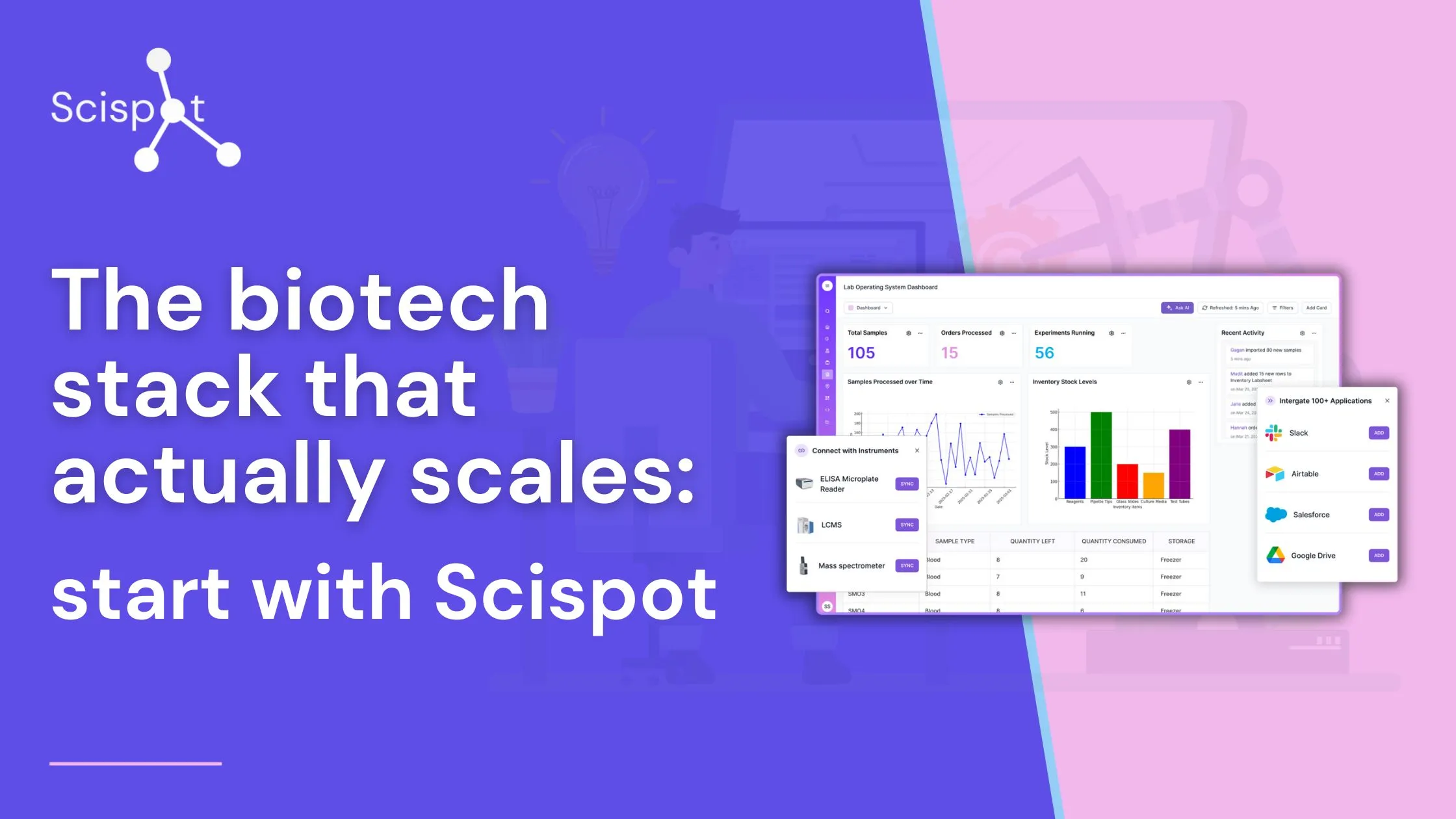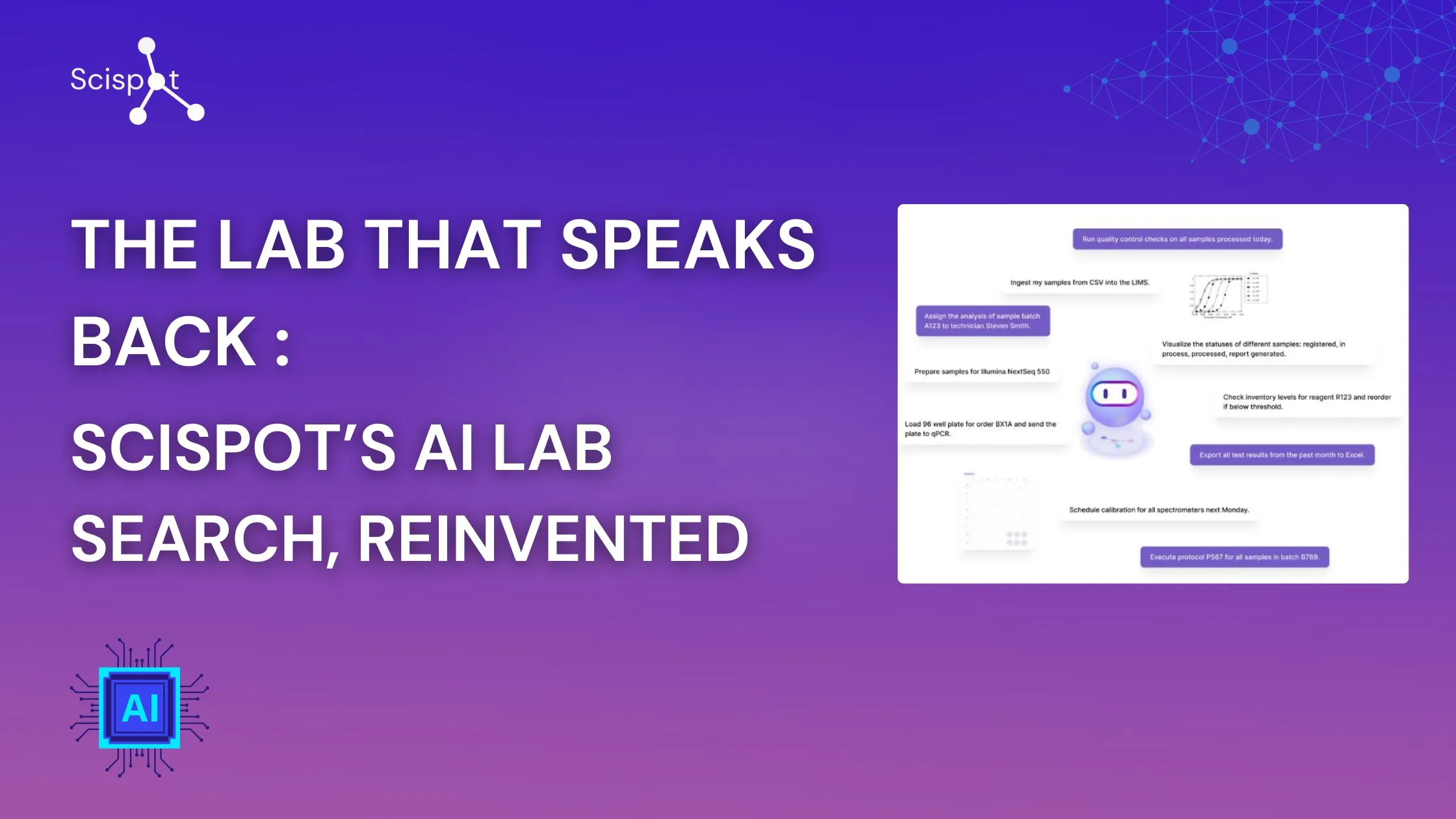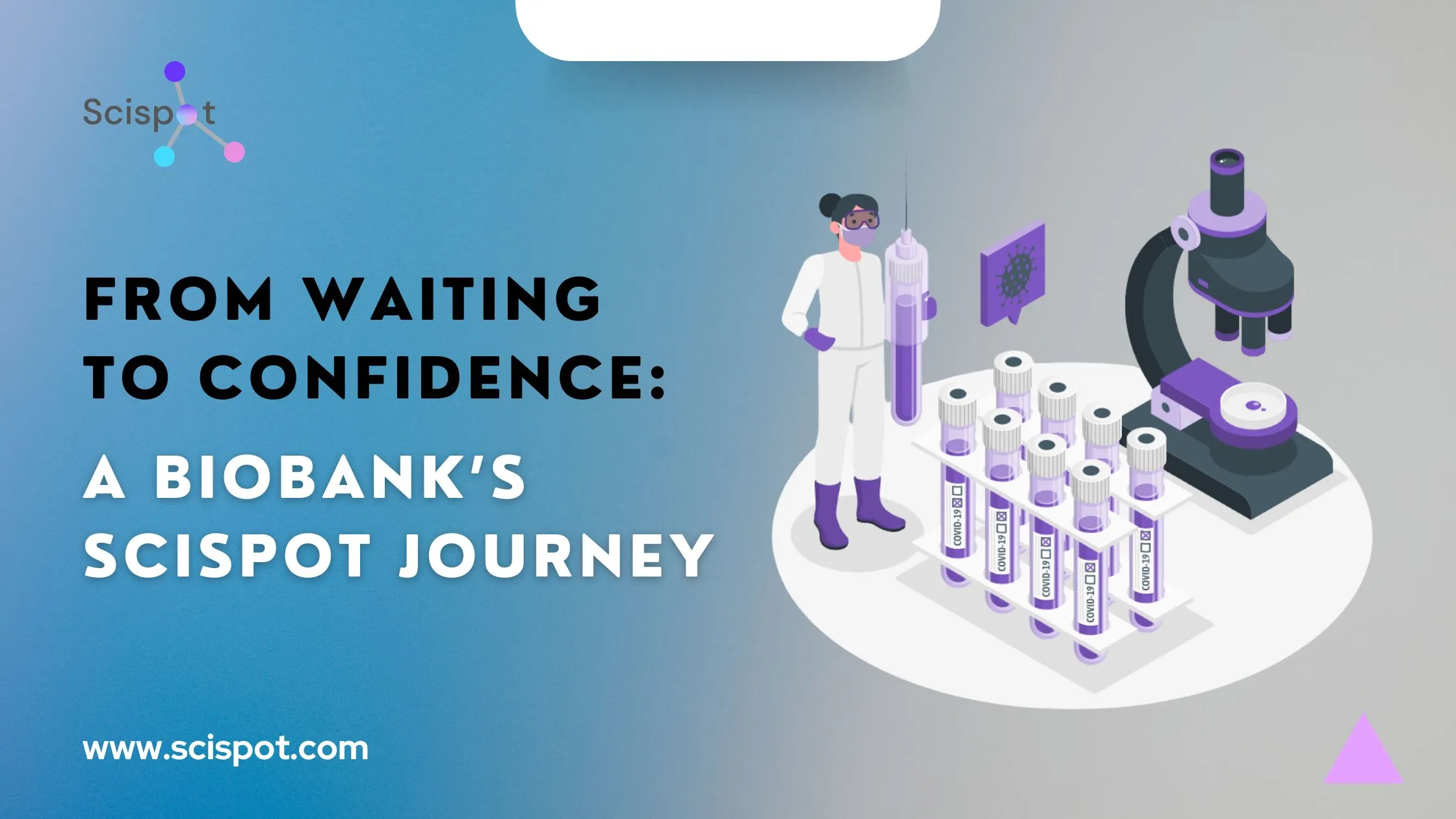In a world where scientific innovation drives progress across healthcare, pharmaceuticals, and beyond, the lab of the future is rapidly moving from concept to reality. This revolution is transforming traditional laboratory environments into highly efficient, data-driven hubs of discovery where automation, artificial intelligence, and connectivity converge to accelerate research and development like never before.
The concept of the lab of the future isn't merely about adopting new technologies; it represents a fundamental shift in how scientific work is conducted. In 2025, these innovations promise to reshape everything from drug discovery to diagnostics, creating environments where scientists are liberated from repetitive tasks and empowered to focus on creative problem-solving and breakthrough discoveries.
As we stand on the precipice of this transformation, understanding what drives the automated lab of the future and how these changes will manifest by lab of the future 2025 has become essential knowledge for organizations looking to maintain competitive advantage in increasingly complex scientific landscapes.
What is the Lab of the Future?
The lab of the future represents a scientific revolution that will completely change how entire industries operate. At its core, the concept (also known as "smart lab" or "lab 4.0") aims to make laboratories more efficient by implementing technologies that accelerate digital transformation and reduce time to market.
What is the lab of the future exactly? It's a scientific environment centered on technology and data, where most laboratory operations are automated using technology, especially robotics. These systems generate data managed by integrated information systems with robust data management and analytics tools.
In this evolving paradigm, labs of the future will integrate physical and virtual technologies, leverage automated processes and robots, and implement centralized data management systems. They will be digital, sustainable, predictive, and significantly more efficient than traditional laboratory environments.
The transformation reaches beyond merely digitizing paper processes—it represents a fundamental rethinking of how scientific data flows through an organization. In 2025, we'll see these concepts fully realized as the lab of the future 2025 becomes the new standard for scientific excellence.

Core Technologies Powering the Lab of the Future
The revolution unfolding in modern laboratories is built upon several foundational technologies that together create the infrastructure for the lab of the future. Understanding these technologies is crucial for organizations planning their laboratory transformation strategies.
Automation and Robotics
In the automated lab of the future, robotics and automation handle routine tasks like sample preparation, pipetting, and data collection. This shift reduces human error and frees scientists to focus on more complex analysis and innovation. Studies show that automated systems can significantly reduce sample mismanagement and storage costs in laboratory environments.
In 2025, automation will be more widely deployed within laboratories, particularly in processes like manual aliquoting and pre-analytical steps of assay workflows. This expansion will improve equipment reliability and overall result quality while allowing lab personnel to dedicate more time to higher-value activities.
Artificial Intelligence and Machine Learning
AI and machine learning are transforming how labs operate, assisting with data analysis, pattern recognition, experiment planning, and suggesting next experimental steps. In the lab of the future, AI will play a significant role in transforming operations, aiding decision-making and accelerating discoveries.
The near future lab won't just be automated—it will be anticipatory, proactively suggesting next actions based on complex data analysis. AI-driven robotic systems will learn from data and optimize laboratory processes by adjusting to changing conditions in real-time.
Internet of Things (IoT) and Connectivity
The Internet of Things is revolutionizing how laboratory equipment communicates and shares data. Smart laboratory equipment, enabled by IoT technology, allows scientists to monitor, control, and optimize laboratory conditions in real-time. Sensors embedded in equipment provide continuous data on temperature, humidity, pressure, and other critical variables.
In the labs of the future, IoT-connected software helps automate processes by enabling instruments, robots, and "smart" consumables to communicate seamlessly. This connectivity significantly improves the efficiency of lab-based processes, ultimately allowing professionals to focus more time on delivering collaborative patient care.
Cloud Computing and Data Management
Cloud-based storage provides secure data management and analysis capabilities that are transforming how research is conducted and shared. In the lab of the future, genomic data, imaging results, and experimental outcomes are stored remotely, allowing researchers to access them from anywhere.
This shift enables seamless collaboration among research teams across the globe, supporting real-time data sharing and project coordination. Cloud-based laboratory information management systems are becoming standard, though comprehensive cyber protection strategies will be essential as this trend accelerates.

Advanced Analytics and Visualization Tools
With labs managing vast volumes of complex data, advanced analytics and visualization tools are becoming essential. These tools help identify trends, streamline operations, and improve clinical decision-making and patient diagnoses.
When combined with AI, these technologies help transform laboratory operations by reducing costs and enhancing compliance with regulatory standards. By analyzing complex datasets, they can identify potential workflow bottlenecks or underperforming processes, allowing personnel to address inefficiencies that might otherwise be missed.
Virtual and Augmented Reality
Visualization tools like augmented reality are enhancing what researchers see with digital information, such as safety procedures and batch numbers. Meanwhile, virtual reality allows aspects of the lab to be accessed remotely for purposes such as training, creating controlled learning environments that minimize resource wastage.
The lab of the future will integrate these technologies to create environments where virtual and physical components work together seamlessly, enabling researchers to simulate biological processes, test hypotheses, and plan experiments virtually.

Advantages and Obstacles of Lab of the Future Innovations
The transformation to a lab of the future comes with significant benefits but also presents challenges that organizations must navigate carefully.
Key Advantages
Enhanced Efficiency and Productivity: By automating routine tasks, the automated lab of the future dramatically increases throughput and reduces time spent on manual processes. Research indicates that labs implementing integrated systems can experience substantial improvements in data accuracy and overall lab productivity.
Improved Data Quality and Analysis: Digital systems ensure consistent data collection and analysis, reducing errors associated with manual processes. Advanced analytics tools help researchers extract meaningful insights from complex datasets faster than ever before.
Greater Collaboration: The lab of the future enables global collaboration through cloud-based systems and shared digital platforms. For teams spread across the globe, these technologies facilitate synchronized work as one connected network.
Cost Savings: Despite initial investment costs, long-term savings emerge through reduced reagent waste, fewer experimental repeats, lower labor costs for routine tasks, and optimized resource utilization.
Sustainability: The labs of the future prioritize sustainability through energy-efficient equipment, waste-minimizing solutions, and optimization of resource use. This not only reduces environmental impact but also contributes to cost savings in an era of tightening research budgets.
Enhanced Safety: Advanced safety features in the lab of the future include smart safety devices that detect hazardous materials, track toxic gases, and provide real-time alerts during malfunctions. These innovations significantly reduce workplace hazards.
Key Obstacles
High Implementation Costs: The initial investment required for automation, robotics, and advanced computing systems can be substantial, creating barriers particularly for smaller labs.
Training and Adaptation Challenges: Lab personnel need comprehensive training to work effectively with new technologies. Many organizations struggle to provide adequate training, leaving engineers feeling unprepared for the transition.
Cybersecurity Concerns: As labs become more digitized, they face increased vulnerability to cybersecurity threats. Controlling accessibility and implementing robust security measures is crucial to safeguard sensitive data and operations.
Integration with Legacy Systems: Many labs face challenges integrating new technologies with existing equipment and workflows, creating compatibility issues that must be addressed.
Resistance to Change: Cultural resistance often presents a significant barrier. Lab engineers may be skeptical about new technologies, particularly if they perceive them as limiting their autonomy or creative freedom.
Regulatory Compliance: Labs must ensure that new technologies comply with industry regulations and standards, which can complicate implementation processes and slow adoption.
Case Studies and Real-World Applications
The transformation to the lab of the future is already underway across various organizations, with tangible results demonstrating the value of these investments.
Eli Lilly's Autonomous Lab
Eli Lilly debuted a self-driving lab at its biotechnology center in San Diego, representing the culmination of a 6-year project. This facility includes over 100 instruments and storage for more than 5 million compounds. The Life Sciences Studio puts the company's expertise in chemistry, in vitro biology, sample management, and analytical data acquisition in a closed loop where AI controls robots that researchers can access via the cloud.
James P. Beck, the head of medicinal chemistry at the center, notes that "The lab of the future is here today," though he acknowledges that closing the loop requires addressing "a multifactorial challenge involving science, hardware, software, and engineering."
In a significant development, as of September 2024, Arctoris acquired the Science Studio biology platform from Eli Lilly and relocated it from San Diego to Oxford, UK. This acquisition doubles the size of Arctoris' existing lab, creating one of the world's largest robotic drug discovery platforms.
IBM's Autonomous Research Facility
IBM launched a self-driving laboratory combining AI with robotics at its research facility in Zurich. This initiative, known as RoboRXN, represents a significant step toward creating a Renaissance-style lab environment for multidisciplinary scientists versed in chemistry, biology, and data science.
The approach exemplifies how computing giants are applying their expertise in AI and automation to accelerate scientific discovery. The RoboRXN platform integrates several sequence-to-sequence transformer models, each performing one part of the chemical synthesis task, from analyzing target molecules to generating step-by-step robotic instructions.
Academic Research Transformation
Professor Alán Aspuru-Guzik at the University of Toronto and colleagues developed a "self-driving laboratory" where AI controls automated synthesis and validation in a cycle of machine-learning data analysis. Meanwhile, Andrew I. Cooper and his team at the Materials Innovation Factory (University of Liverpool) published results from an AI-directed robotics lab that optimized a photocatalytic process for generating hydrogen from water after running about 700 experiments in just 8 days.
In a recent advancement reported in November 2024, Cooper's team at Liverpool developed 1.75-meter-tall mobile robots that use AI logic to make decisions and perform exploratory chemistry research tasks to the same level as humans, but much faster.
These academic examples demonstrate how the lab of the future is democratizing access to advanced research capabilities, potentially accelerating the pace of scientific discovery across disciplines.
Bay Area Animal Health Startup
.png)
A Bay Area-based animal health startup implemented automation in their sample intake processes, resulting in a 60% reduction in human errors and over a 50% increase in sample processing speed. Their use of QR code-based logging enabled automated accessioning and seamless linking of samples to specific experiments, eliminating manual errors and ultimately leading to more accurate research outcomes.
"Scispot has been instrumental in automating our sample intake process," explains Novia Kayfetz-Vuong, Lab Technician at AnimalBiome. "Managing around 350 samples a week is no small task. By integrating Scispot with our database, we automated bulk sample intake and metadata updates, saving time and enhancing data accuracy by eliminating manual data entry."

Looking Ahead: The Lab of the Future in 2025 and Beyond
As we move toward lab of the future in 2025, several key trends are emerging that will shape how these environments evolve and function.
The Shift to Data-Centric Ecosystems
One of the most significant transformations in lab of the future 2025 will be the pivot from electronic lab notebook (ELN)-centric workflows to data-centric ecosystems. This represents more than digitizing paper processes—it's a fundamental rethinking of how scientific data flows through organizations.
As Dr. Hans Bitter from Takeda noted, organizations need to embrace standardization that enables end-to-end digitalization across the R&D lifecycle to generate predictive knowledge across functions and stages. This is influencing a "right-first-time" approach that will dramatically improve speed, agility, quality, and R&D efficiency.
Advanced AI Integration and Cognitive Systems
In 2025, we'll see deeper integration of cognitive systems and agentic AI in labs of the future. These technologies will move beyond simple data analysis to become truly anticipatory—proactively suggesting next actions based on complex data analysis.
The automated lab of the future will leverage these capacities to not just execute experiments but design them, continuously learning and optimizing processes without constant human supervision.
.gif)
Enhanced Sustainability Initiatives
Sustainability will become an even more important focus for labs of the future in 2025. Energy-efficient equipment, waste reduction strategies, and greener processes will become standard as laboratories align with environmental goals while seeking long-term operational savings.
The lab of the future 2025 will incorporate technologies like heat recovery systems to reduce carbon footprints, while retrofitting older equipment with modern, energy-efficient systems will help institutions meet sustainability goals while maintaining scientific output.
Comprehensive Digital Infrastructure
Robust digital infrastructure will serve as the cornerstone empowering innovative pipelines throughout the therapeutic asset journey. Organizations are moving from legacy architecture with multiple system interfaces toward decoupled platforms with unified data layers.
This transformation is creating informatics ecosystems centered on data access rather than system dependencies—a critical evolution that aligns with the vision of standardization enabling end-to-end digitalization to improve speed, agility, and R&D efficiency.
Human-Robot Collaboration
The lab of the future 2025 will be characterized by enhanced human-robot collaboration, where automation doesn't replace human scientists but amplifies their capabilities. This "Industry 5.0" approach focuses on how humans and machines can work together optimally, combining the creativity and problem-solving abilities of scientists with the precision and tirelessness of automated systems.
Conclusion
The lab of the future represents far more than a technological upgrade—it embodies a fundamental reimagining of how scientific work is conducted. By integrating automation, artificial intelligence, IoT connectivity, and advanced data analytics, these environments are transforming from places of labor-intensive experimentation to hubs of innovation where scientists can focus on creative problem-solving and breakthrough discoveries.
As we approach lab of the future 2025, organizations that embrace these technologies will gain significant advantages in speed, efficiency, and innovation potential. While challenges exist in implementation, the benefits—enhanced productivity, improved data quality, cost savings, and sustainability—make the journey worthwhile.
For scientific professionals, educators, and organizations across industries, understanding and adapting to this transformation isn't optional—it's essential for remaining competitive and relevant. The labs of the future aren't just changing how experiments are conducted; they're accelerating the pace of discovery itself, ushering in an era where scientific breakthroughs that once took decades might soon be achieved in years or even months.
The future of scientific discovery has arrived, and it's unfolding in laboratories transformed by technology, collaboration, and data-driven insights. Those who recognize and embrace this transformation will be positioned to lead the next wave of innovation that promises to solve some of humanity's most pressing challenges.
Ready to leap from concept to reality? Book a demo with Scispot today and see how we're turning the lab of the future into the lab of now.












